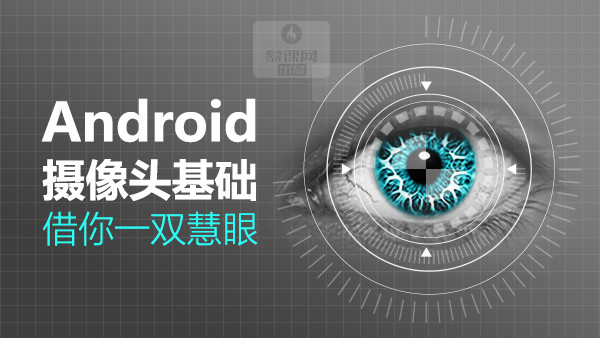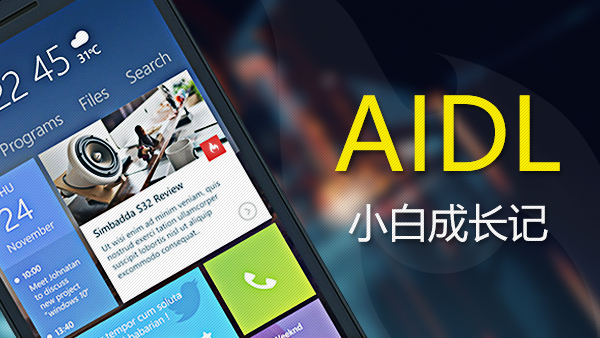最近小猿在改进之前写过的学校教务系统APP的UI界面的时候,发现了一个有趣的Android UI——卡片式折叠交互CardStackView,该View是在GitHub上找到的,但是该View的主人没有告诉我如何使用,小猿研究了半天,在此,将其简单的使用步骤阐述一下:
CardViewStack的GitHub地址:https://github.com/loopeer/CardStackView
使用步骤:
1.在Android studio中dependencies里添加依赖
dependencies {
compile 'com.loopeer.library:cardstack:1.0.2'}2.自定义一个单个卡片的item:
LinearLayout android:id="@+id/linear_list_card_item" xmlns:android="http://schemas.android.com/apk/res/android" xmlns:app="http://schemas.android.com/apk/res-auto" xmlns:tools="http://schemas.android.com/tools" android:layout_width="match_parent" android:layout_height="wrap_content" android:orientation="vertical" app:stackHeaderHeight="100dp"> <FrameLayout android:id="@+id/frame_list_card_item" android:layout_width="match_parent" android:layout_height="80dp" android:background="@drawable/course_item_1"> <TextView android:id="@+id/text_list_card_title" android:layout_width="wrap_content" android:layout_height="wrap_content" android:layout_margin="20dp" android:textColor="#fff" android:textSize="24sp" android:textStyle="bold" tools:text="12"/> </FrameLayout> <LinearLayout android:id="@+id/container_list_content" android:layout_width="match_parent" android:layout_height="wrap_content" android:animateLayoutChanges="true"> <android.support.v7.widget.RecyclerView android:id="@+id/recycler" android:layout_width="match_parent" android:layout_height="wrap_content"> </android.support.v7.widget.RecyclerView> </LinearLayout> </LinearLayout>
3.在主布局里使用CardStackView:
<?xml version="1.0" encoding="utf-8"?><LinearLayout xmlns:android="http://schemas.android.com/apk/res/android" android:layout_width="match_parent" android:layout_height="match_parent" android:background="#f0f0f0"> <com.loopeer.cardstack.CardStackView android:id="@+id/stackview" android:layout_width="match_parent" android:layout_height="match_parent" android:clipToPadding="false" android:padding="6dp"> </com.loopeer.cardstack.CardStackView></LinearLayout>
4.写一个TestStackAdapter(GitHub博主上给出了个Adapter的demo,里面有卡片的三种样式:
ColorItemViewHolder :显示卡片正常样式
ColorItemLargeHeaderViewHolder :卡片的头比正常显示的大
ColorItemWithNoHeaderViewHolder :不显示卡片的头,只显示内容)
TestStackAdapter代码有点长,但是理解起来不难,因为它非常像RecyclerView.Adapter<>,因为它是继承自CardStackView.Adapter<>,我将部分主要代码讲一下:
1.onCreateView():加载卡片的item布局(三种样式可以加载):
@Override
protected CardStackView.ViewHolder onCreateView(ViewGroup parent, int viewType) {
View view; switch (viewType) { case R.layout.list_card_item_larger_header:
view = getLayoutInflater().inflate(R.layout.list_card_item_larger_header, parent, false); return new ColorItemLargeHeaderViewHolder(view); case R.layout.list_card_item_with_no_header:
view = getLayoutInflater().inflate(R.layout.list_card_item_with_no_header, parent, false); return new ColorItemWithNoHeaderViewHolder(view); default:
view = getLayoutInflater().inflate(R.layout.list_card_item, parent, false); return new ColorItemViewHolder(view);
}
}2.getItemViewType():返回每个item的布局样式,在这个Adapter里,都返回了统一的样式:
@Override
public int getItemViewType(int position) { if (position == 6) {//TODO TEST LARGER ITEM
return R.layout.list_card_item_larger_header;
} else if (position == 10) { return R.layout.list_card_item_with_no_header;
}else { return R.layout.list_card_item;
}
}3.onItemExpand(boolean b):在这里判断卡片是否被点击,true就将卡片展开:
@Override
public void onItemExpand(boolean b) {
mContainerContent.setVisibility(b ? View.VISIBLE : View.GONE);
}4.onBind(Integer data, int position):根据item的position来加载卡片内的内容:
public void onBind(Integer data, int position) { mLayout.getBackground().setColorFilter(ContextCompat.getColor(getContext(), data), PorterDuff.Mode.SRC_IN); mTextTitle.setText(String.valueOf(position));
}5.bindView(Integer data, int position, CardStackView.ViewHolder holder):调用onBind()来加载布局:
@Override
public void bindView(Integer data, int position, CardStackView.ViewHolder holder) { if (holder instanceof ColorItemLargeHeaderViewHolder) {
ColorItemLargeHeaderViewHolder h = (ColorItemLargeHeaderViewHolder) holder;
h.onBind(data, position);
} if (holder instanceof ColorItemWithNoHeaderViewHolder) {
ColorItemWithNoHeaderViewHolder h = (ColorItemWithNoHeaderViewHolder) holder;
h.onBind(data, position);
} if (holder instanceof ColorItemViewHolder) {
ColorItemViewHolder h = (ColorItemViewHolder) holder;
h.onBind(data, position);
}
}5.在MainActivity中将CardStackView初始化,因为我是在Fragment中写的,在此,附上我的Fragment中的代码:
public class ProjectFragment extends Fragment implements CardStackView.ItemExpendListener{
private CardStackView cardStackView; private TestStackAdapter testStackAdapter; private static Integer[] item = new Integer[]{R.color.team1,R.color.team2,R.color.team3,
R.color.team4,R.color.team5,R.color.team6,R.color.team7,R.color.team8}; @Nullable
@Override
public View onCreateView(LayoutInflater inflater, @Nullable ViewGroup container, @Nullable Bundle savedInstanceState) {
View view = inflater.inflate(R.layout.project_fragment,container,false);
initWight(view); return view;
} private void initWight(View view) {
cardStackView = (CardStackView) view.findViewById(R.id.stackview);
testStackAdapter = new TestStackAdapter(getContext());
cardStackView.setAdapter(testStackAdapter);
cardStackView.setItemExpendListener(this);
handler.postDelayed(new Runnable() { @Override
public void run() {
testStackAdapter.updateData(Arrays.asList(item));
}
},200);
} @Override
public void onItemExpend(boolean expend) {
}
}1.先初始化一组颜色的数组,因为TestStackAdapter中根据传入的颜色数组来将卡片的片头附上颜色:
private static Integer[] item = new Integer[]{R.color.team1,R.color.team2,R.color.team3,
R.color.team4,R.color.team5,R.color.team6,R.color.team7,R.color.team8};2.利用handler来进行延时更新卡片内的内容,先将CardStackView实例化,在利用.updateData()来进行CardStackView的内容更新:
handler.postDelayed(new Runnable() { @Override
public void run() {
testStackAdapter.updateData(Arrays.asList(item));
}
},200);3.CardStackView的item展开监听事件(通过implement CardStackView.ItemExpendListener):
cardStackView.setItemExpendListener(this);
@Override
public void onItemExpend(boolean expend) {
}CardStackView的简单使用就到此了,如果对此有兴趣的话,可以自行研究一下源码,也可自己写个CardStackAdapter,因为源代码的TestStackAdapter是继承自CardStackView.Adapter<>的
原文链接:http://www.apkbus.com/blog-822715-77192.html

 随时随地看视频
随时随地看视频




